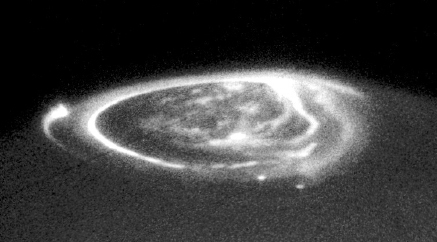U.S.
Alaska
U.S.
Alaska
081
Aurora Borealis, Fairbanks, AK
![]()
![]()
The Northern Lights
The Aurora Borealis (also called the Northern Lights, and shown in Figure 81-1) appears in the ionosphere in northern latitudes and is visible on dark nights. The light displays are caused by the interaction between the solar wind and the Earth’s magnetosphere (see sidebar). To see the northern aurora, it is necessary to travel far to the north—the aurora is roughly centered on the Magnetic North Pole (see Chapter 128).
In the U.S., a good place to see the aurora is Fairbanks, Alaska; the nights are dark enough, it’s far enough north, and the city has relatively clear nights in the spring and autumn. The aurora is also visible from northerly parts of eastern Canada, Iceland, and northern Scandinavia.
In Fairbanks, spring and autumn (around the equinoxes) are the best times for aurora viewing because the sky is dark and clear. You’ll have to stay up until local midnight (ignoring daylight savings time, since you want the actual middle of the night as determined by longitude), when the sky is darkest. For best results, escape Fairbanks by driving north until the city lights are no longer affecting visibility.
The most common aurora displays are sheets of green that hang in the air, but many other colors are also possible, from reds to deep violets. Like the weather, the Aurora Borealis is somewhat unpredictable, although aurora forecasts are available based on activity of the Sun and solar wind. To see the aurora, you need a combination of a strong solar wind and a clear sky.
There is an equivalent aurora at the South Pole (the Aurora Australis), but the land it hovers over is mostly uninhabited (apart from hardy souls living in Antarctica), so it is rarely seen.
The planets of our Solar System also have aurora. The Hubble Space Telescope has photographed aurora on both Jupiter (see Figure 81-2) and Saturn, and even moons such as Io, Ganymede, and Europa have auroral displays.

Figure 81-1. Aurora Borealis seen from the International Space Station;
courtesy of Image Science and Analysis Laboratory, NASA–Johnson Space Center

Figure 81-2. Jupiter’s aurora; courtesy of NASA/ESA,
John Clarke (University of Michigan)
Practical Information
A good starting point for aurora hunting is the University of Alaska at Fairbanks Geophysical Institute at http://www.gedds.alaska.edu/AuroraForecast/. The institute has forecasts of auroral activity for Fairbanks and around the world, and practical information about when and how to see an aurora.